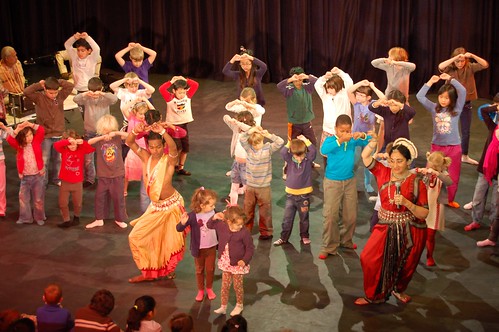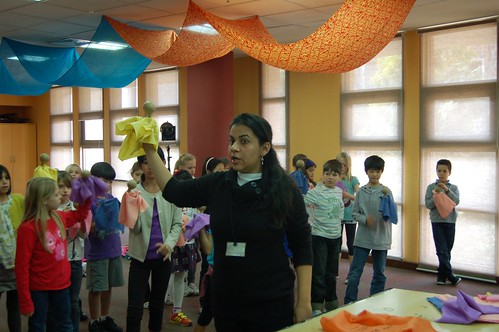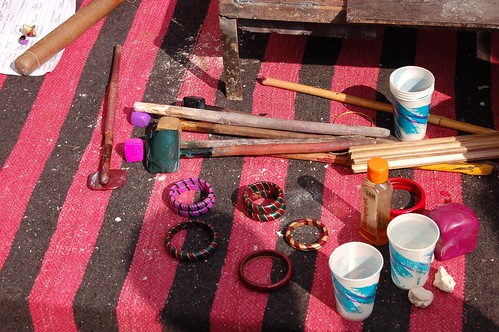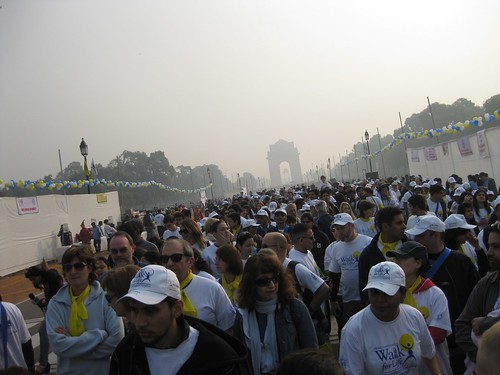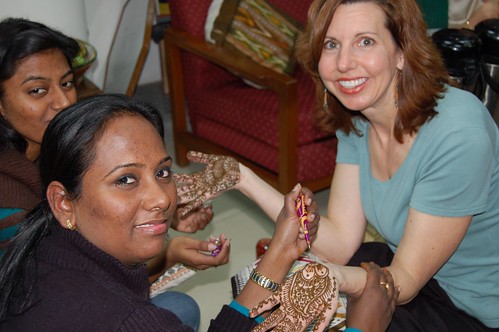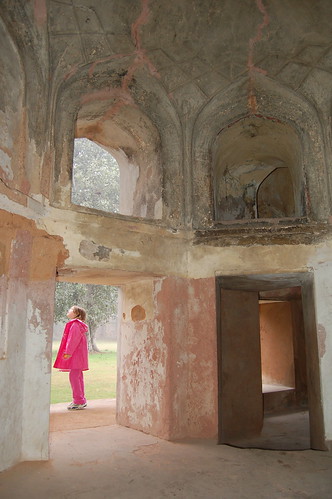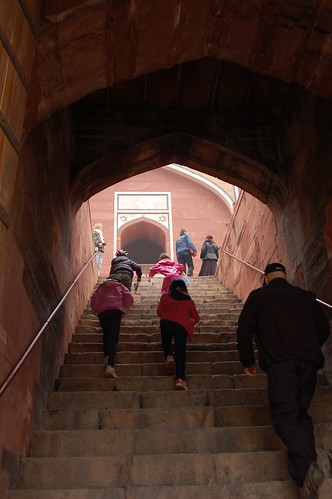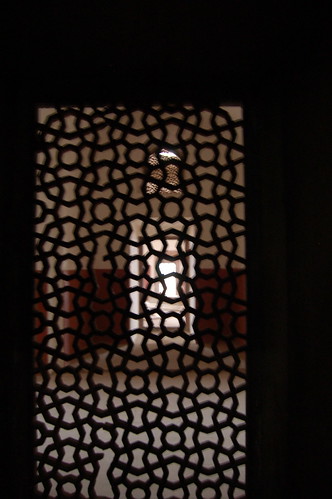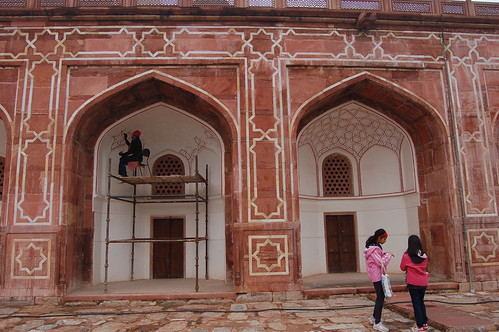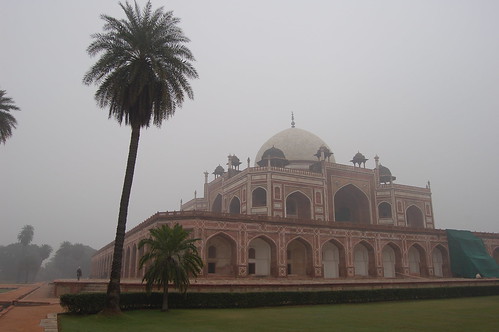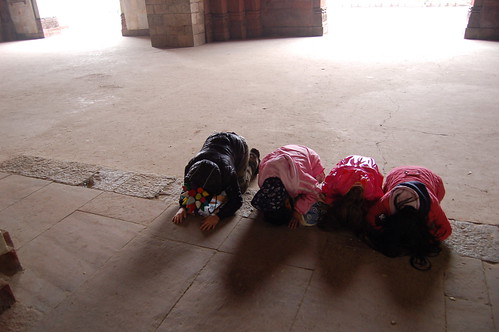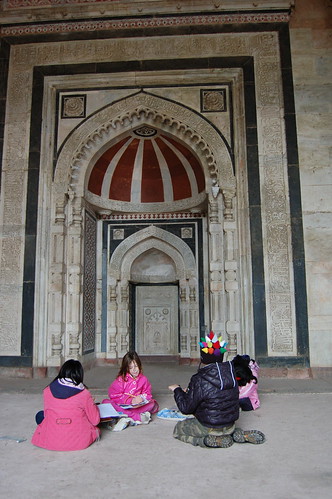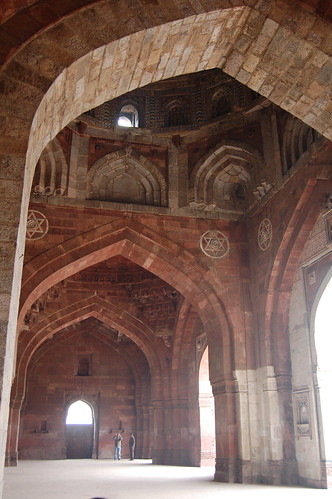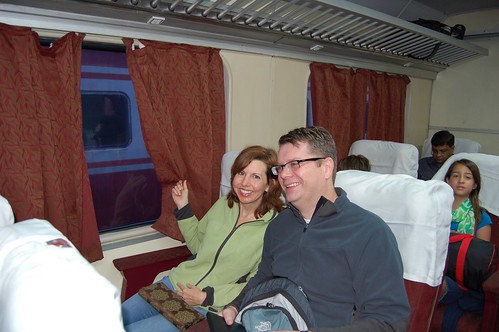A newcomer to India’s art culture, I can only say I love it ALL! Textiles, furniture, paintings, sculpture … every piece I’ve seen bursts with symbolism or cultural nuances that beg for interpretation. With a tradition of visual storytelling, generations of Indians have passed on religious stories, myths, folktales and morality lessons through art. When I heard a visiting artist was sharing his Gond Tribal Art (“Bhiti Chitra” – Wall Art – in Hindi) with elementary school students, I eagerly dashed up two flights of stairs to meet him.
I found Sunil Dhurvey sitting cross-legged on the floor with a painting on a clipboard in his lap and a ink pen in his hand. He looked up and shyly returned my exuberant “Namaste.”
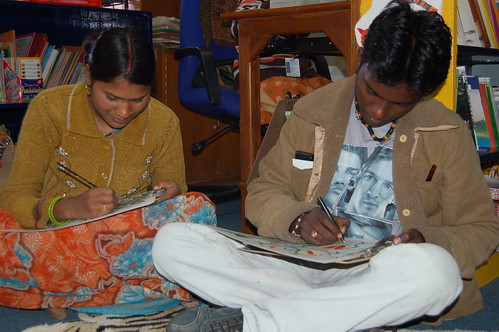
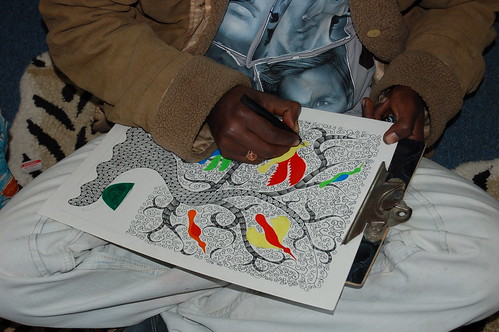
Having used up my Hindi, I gratefully engaged Kanika Roy, art teaching assistant, and Rupa Samaria, a Delhi artist and substitute teacher, to translate during my interview.
They explained that Sunil and his wife, Santoshi, had traveled for two days by bus and train from their home in Dindori Village, Madhya Pradesh.
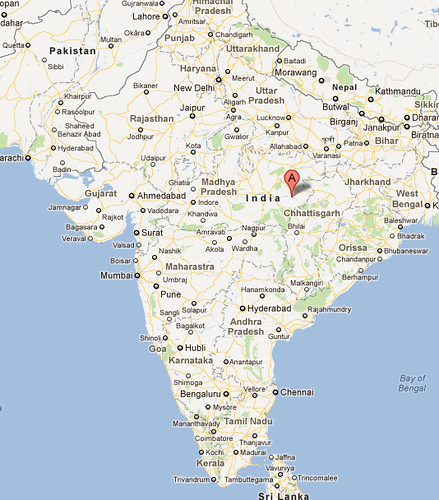
I wondered if Dindori Village was a hotbed of artists, but Sunil said most of the 400 residents – including himself – are farmers. “Sometimes people ask me, ‘Why do you spend so much time on art? Why don’t you go and work in the field?'” he said. His answer? “I love it.”
Sunil informally learned the techniques of Gond Tribal Art from a young age by watching his mother paint the designs on walls and floors of village buildings, especially for festivals, weddings and other celebrations.
According to an article by Venus Vinod Upadhayaya on the LifePositive website,
Originally done with four-coloured mud found in the forest, the Gond tribal paintings were drawn on the walls of the houses and were an integral part of the tribal festivity, rituals, and day-to-day living. … Gonds believe that (the) Narmada (river) was once a woman and was married to the Sonmura river. During the marriage rituals, the turmeric from her body fell down on the earth and created the yellow mud. The black mud was collected from within the tribal village whereas the white had to be fetched from another forest nearby. Both men and women would paint on the walls. The original drawings on the cowdung-smeared walls were scenes from the forest and its creatures, and depictions of traditional dances and tribal deities.
By the age of 12, Sunil said, he was creating his own art. I asked if he would be a mentor to younger aspiring artists, but he shook his head. Kanika elaborated, “Usually in the villages they don’t teach young ones how to paint this type of art. They just watch and they learn. If they are painting on a building, they think about what would go with that type of building. For example, if they are painting the storage building for grain, they might paint birds or mice because those animals are likely to be found there.”
Sunil displayed small paintings on cardstock and larger ones on canvas. He said the Gond Tribal Art style is known for its depictions of stories about nature (especially the Narmada River), mythological characters and gods, and daily life. Rupa pointed to one of his paintings, hanging on the classroom whiteboard, and said, “This is a typical village scene with the women fishing and the men cutting the rock. The rocks are used to create a trap in the river. They catch fish and put them in the baskets.”
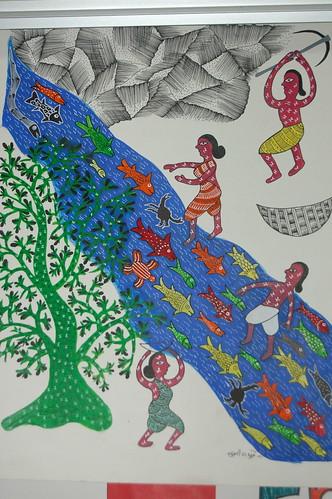
In this photo, Santoshi and Sunil show some of their works. Santoshi painted the ones on the table, and she said they represent the kinds of work she does on village buildings. I wish I had taken a second shot as Sunil really has a lovely smile! Sunil’s mother still paints, and he even brought one of her pieces (but it had already sold by the time I met him).
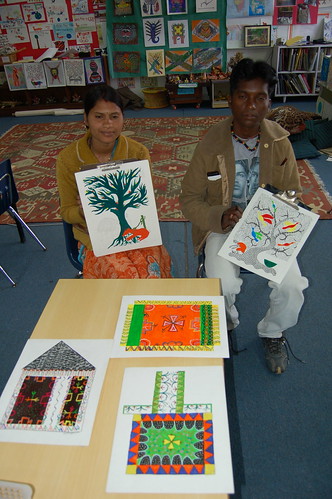
I bought these two peacock paintings from Sunil for about $10 each, but the wonderful experience of getting to know the artist before buying his work was priceless.

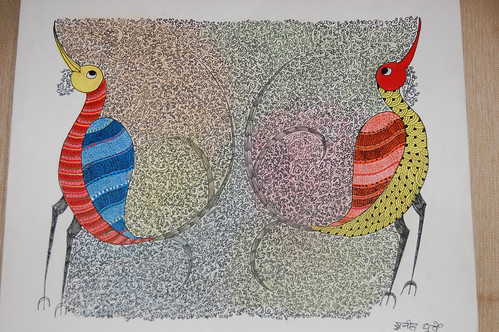
Such fun detail!
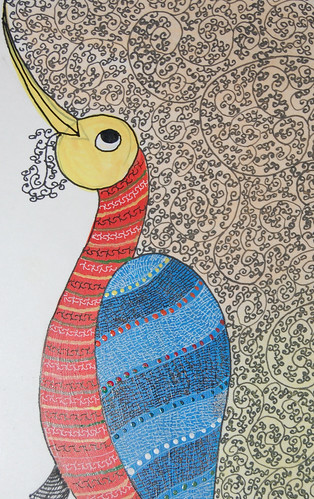
If you are in India, speak Hindi and want to see Sunil’s work, give him a call: 0-88894-08539

